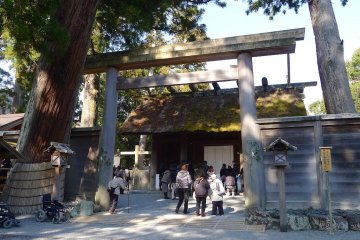
หนึ่งวันที่อิเสะ จินกุ
Benjamin Stockคอลเลกชั่นภาพถ่ายของศาลเจ้า Ise Jingu ในช่วงเทศกาลปีใหม่ที่คึกคัก

Located in Mie Prefecture, the Ise Grand Shrine is a Shinto shrine dedicated to the sun goddess. Supposedly, the shrine or “Jingu” as it is commonly called, is home to the Sacred Mirror; this mirror was the one that drew Amaterasu from hiding and brought light back to the world. In reality, Ise Jingu is a complex of shrines centered around two main shrines, Naiku and Geku.
The inner shrine is Naiku, said to be where Amaterasu dwells even today. Whereas the outer shrine, Geku, is located about six kilometers from Naiku and dedicated to Toyouke-Omikami, the god of agriculture, rice, and harvest. There are an additional 123 shrines in Ise City surrounding both Naiku and Geku. The shrine buildings at Naiku and Geku are rebuilt every 20 years based upon a Shinto belief of death and renewal.
The shrine was established in 4 BCE when Princess Yamatohime no Mikoto wandered for twenty years looking for a place to worship the sun goddess. Upon arriving in Ise, Yamatohime received a message from Amaterasu saying that this was the land where she wished to reside. Today, only a person of the royal lineage may be the high priest or priestess of Ise Jingu.
The inner and outer shrines are some 6 kilometers apart, therefore it's recommended that you visit by bus. Buses depart from Ujiyamada and Iseshi stations.

คอลเลกชั่นภาพถ่ายของศาลเจ้า Ise Jingu ในช่วงเทศกาลปีใหม่ที่คึกคัก

ศาลเจ้าอิเสะ ที่เมืองอิเสะ (Ise) เป็นศาลเจ้าชินโตที่ศักดิ์สิทธิ์ที่สุดในประเทศญี่ปุ่น เมื่อปีที่แล้ว (2013) ศาลเจ้าอิเสะได้ทำพิธี Shikinen Sengu พิธีสร้างศาลเจ้าขึ้นมาใหม่ในทุกๆ ยี่สิบปี แต่ก็ไม่เกี่ยวกับอาคารศาลเจ้าไปทั้งหมด การแสวงบุญก็เป็นสิ่งสำคัญในบริเวณนี้
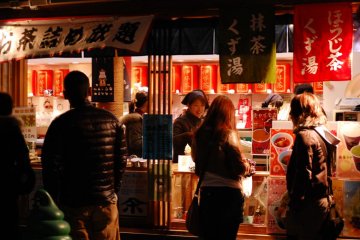
หลังนับถอยหลังขึ้นปีใหม่ ให้ไปฮัตสุโมเดะ การเยี่ยมศาลเจ้าครั้งแรกของปีใหม่ ที่ศาลเจ้าใหญ่อิเสะ
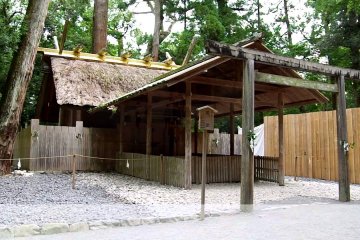
หนึ่งในศาลเจ้าหลักของอิเสะ จินกุ เป็นที่ประดิษฐานของเทพเจ้าแห่งอาหาร เครื่องนุ่งห่ม และที่อยู่อาศัย สร้างขึ้นมาเมื่อ 1500 ปีมาแล้ว
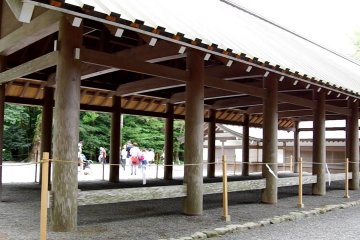
ศาลเจ้าไนกุ (Naiku) เป็นที่ประดิษฐานของเทพเจ้าแห่งดวงอาทิตย์ เทพเจ้าแห่งบรรพบุรุษขององค์จักรพรรดิ และเทพเจ้าแห่งบรรพบุรุษของญี่ปุ่น
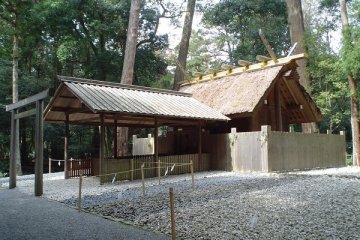
ศาลเจ้าอิเสะ ศาลเจ้าโบราณ สมัยอะสึกะ สถานที่ซึ่งงดงามทั้งธรรมชาติและสถาปัตยกรรม

ดูเหมือนศาลเจ้า วัดและปราสาทเล็กๆ รวมเข้ากัน อาคารฮินจิซุกัน แบบดั้งเดิมของญี่ปุ่นนี้ได้ดำเนินการเป็นโรงแรมพิเศษสำหรับพระบรมวงศานุวงศ์
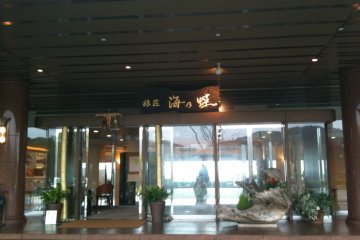
โรงแรมรีสอร์ตออนเซนแสนเลอค่าที่อยู่ริมทะเลและมีทั้งหาดส่วนตัว บาร์ ห้องเล่นเกม และอื่น ๆ อีกมากมาย

Oharai-machi (おはらい町) is a small traditional town that prospered outside the gates of the entrance of Ise Jingu Shrine — Japan's most sacred shrine. As a traditional approach, it spans almost one kilometer in length and is lined with a variety of shops and restaurants.

In Mie Prefecture, not far from the city of Futami, which belongs to the city of Ise, are the Meoto Iwa rocks, which are also called" The Married Rocks ". These two sacred rocks in the sea near the coast are not far from the Futami-Okitama Shrine, the Ryuugu Shrine and also near the famous Ise Shrine itself. The two rocks are connected with a so-called Shimenawa. This is a ritual rope made of rice straw. This fact gave them the nickname "The Married Rocks" In the belief of the Shinto religion, these two rocks represent the union of the pair of gods Izanagi and Izanami, who, according to legend, are the two central gods "Kami" in the myth of the origin of Japan.
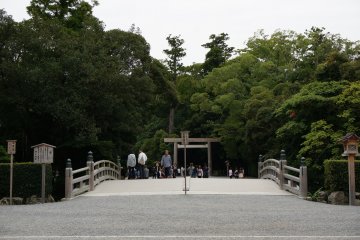
มาเป็นส่วนหนึ่งของธรรมชาติที่ศาลเจ้า Ise และ หินคู่ Meoto Iwa